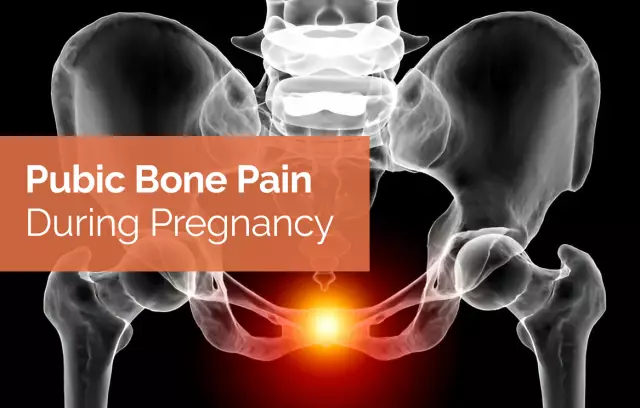- Author Rachel Wainwright [email protected].
- Public 2023-12-15 07:39.
- Last modified 2025-11-02 20:14.
Bone cancer
Brief characteristics of bone cancer

Bone cancer is perhaps the rarest form of cancer. The risk group is mainly children and adolescents; it is extremely rare for older people to develop bone cancer. In adults, bone damage can occur due to malignant cells of the affected organs (lungs, mammary glands) - these are the so-called metastatic tumors. Tumors that arise directly on the bones are called primary.
There are two types of bone cancer: malignant and benign. Benign tumors grow slowly, and normal bone surrounds it with healthy bone. A malignant neoplasm on the bone has ragged edges and rapidly grows in size, affecting an ever larger area of the bone.
Bone Cancer Symptoms
Severe or moderate pain that occurs at the very onset of the disease most often forces people to see a doctor, who, in turn, determines the presence of a tumor. The pain may be dull or aching; may be permanent or intermittent. Other symptoms of bone cancer include limited movement and swelling of the limbs and joints. Bone fractures are possible even with minor falls. Nausea and abdominal pain caused by hypercalcemia (when calcium salts from the affected bone enter the bloodstream) are common. In the later stages of the disease, other symptoms of bone cancer are weight loss and fever.
It is customary to distinguish between several types of malignant tumors, among which there are both very aggressive and rather slowly developing ones.
Osteosarcoma, the most common of all types of bone cancer, is quite aggressive (it can spread to the lungs). It occurs in men on the long bones of the legs and arms, closer to the joints. It is possible to diagnose osteosarcoma by noticing structural changes in the bone on x-rays.
Chondrosarcoma is a type of bone cancer that can develop very slowly or very quickly. Common among people over 40 years old. It is usually localized on the femurs and pelvic bones. Bone cancer metastases of this type can spread to the lymph nodes and lungs.
Chordoma is one of the rarest types of tumor. It is found mainly among people over 30 years old, localized in the lower and upper spine.
Bone Cancer Diagnosis
A complete picture of the disease is the key to successful treatment, so accurately describing the symptoms when diagnosing bone cancer will help the doctor identify the cause of the disease. At the beginning of the diagnosis of bone cancer, it is necessary to undergo a complete medical examination and a blood test. When diagnosing bone cancer, the doctor gives an x-ray to determine the type, size and shape of the cancer. If the X-ray shows seals (thickening) of bone tissue and surrounding soft tissues, then the patient is sent for additional diagnosis of bone cancer. CT (computed tomography) or MRI (magnetic resonance imaging) are modern research methods and allow you to examine in detail the bone, tumor and surrounding tissues.
Bone cancer treatment

Before starting treatment for bone cancer, doctors take into account several factors: the type, aggressiveness, size and location of the tumor, and the presence of metastases.
Surgery, radiation therapy, or chemotherapy - these methods of fighting bone cancer are effective both individually and together.
Surgical treatment for bone cancer involves removing the entire tumor, i.e. amputation of part of the bone. In this case, it is not allowed to leave the affected areas, otherwise the remaining malignant cells will continue to grow and develop. Part of the surrounding tissue is also removed, as well as parts of the nerves and blood vessels. The amputated portion of the bone can be repaired with bone cement in small areas or with metal implants if a significant portion of the bone has been removed.
Chemotherapy for bone cancer is prescribed by an oncologist who will select an effective and safe dose of chemotherapy drugs. They are injected intravenously and inhibit bone cancer cells. Chemotherapy is effective both before and after surgery. In the first case, it shrinks the tumor, thereby facilitating surgical intervention; in the second case, it fights the remaining malignant cells after the operation.
The essence of radiation therapy boils down to the fact that directed X-rays to destroy cancer entrances. The rays enter the body in small doses so that side effects are minimal.
I must say that recently the survival rate of bone cancer patients (and cancer patients) has increased. This is largely due to the advanced discoveries in the field of radiosurgery, the rapid development of technologies and new approaches in the treatment of oncological diseases. The prognosis of bone cancer with competent and timely treatment is favorable.
YouTube video related to the article:
The information is generalized and provided for informational purposes only. At the first sign of illness, see your doctor. Self-medication is hazardous to health!






